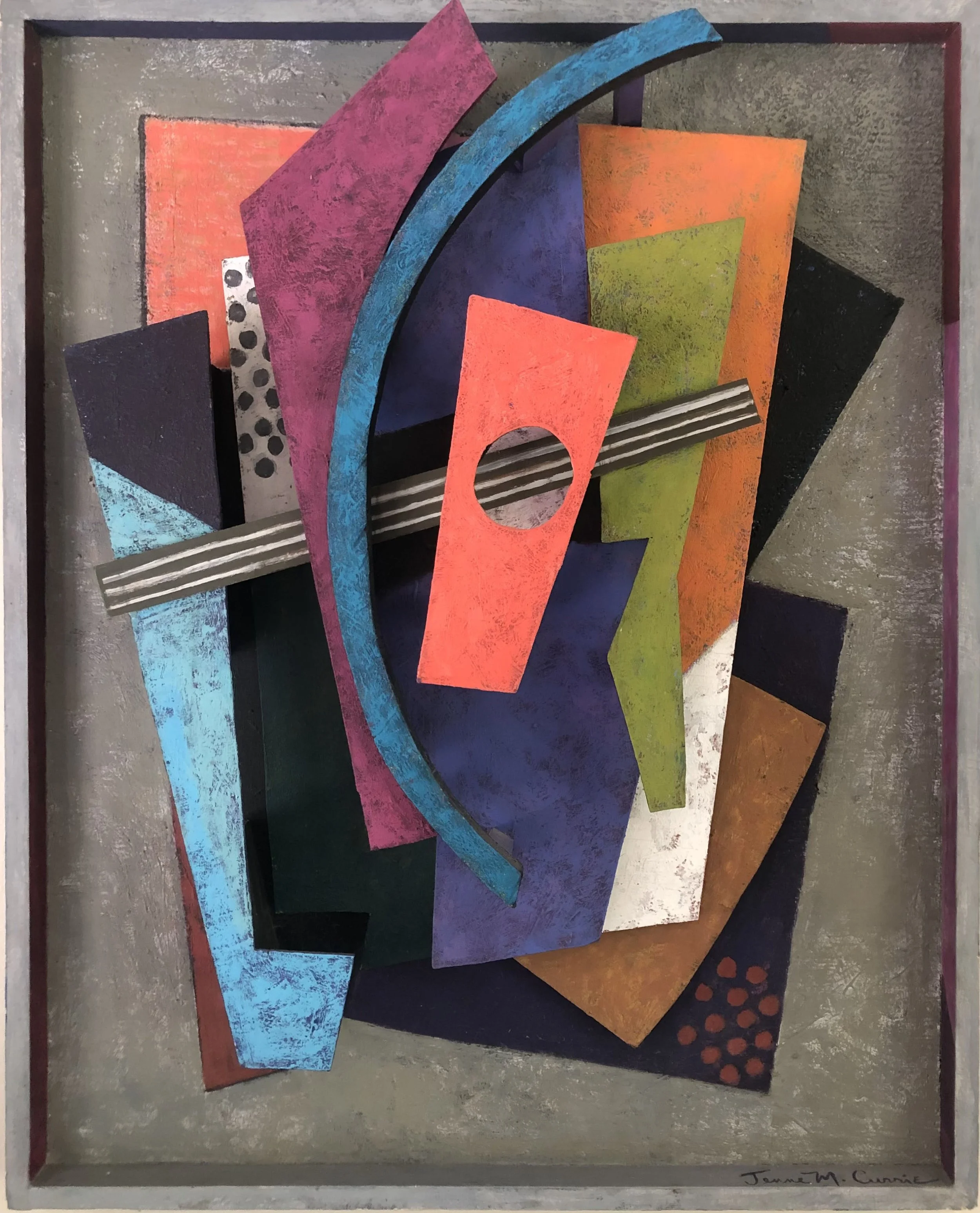Jenne Currie, Creole, acrylic on assembled wood, 38x30x7”
This spring, Buster Levi Gallery is pleased to present a series of focused three person exhibitions. The first of these exhibits, titled, Connections I, will feature paintings by Rick Brazill, wall sculptures by Jenne Currie and photographs by Lucille Tortora. The exhibit will run from March 3 through March 26, 2023. The opening for the show will be on Friday March 3, 2023 from 6-8pm. The purpose of the exhibits is to present work from different artists that bears relationships or similar explorations whether they are thematic or visual.
Rick Brazill, Apple and Blueberries, oil on panel, 7x9”
Brazill’s works are small oil on canvas still life paintings. The subject matter consists of various types of provisions and his style of painting is a keenly observed soft focused realism. Currie’s wall sculptures are a hybrid of painting and three dimensional shapes made primarily of wood. Many of the wall sculpture’s refer to musical instruments themes while others are based on still lives. Currie’s work, in contrast to Brazill, utilizes a personal interpretation of cubist compositional ideas. Tortora’s black and white photographs merge different exposures of buildings and assemble them into triptychs. The resulting works tend toward abstraction with their focus being a combination of cropped sections of the buildings and high tonal contrast that stress their rhythmic relationships.
At a first glance, the work of the three artists share little in common. However, all three share an incisive interest in compositional proportion and movement throughout their work. Both Currie and Tortora emphasize ‘simplified’ almost abstract shapes and textures that for the most part actively move through curvilinear and angular variations. Value contrast is emphasized in Tortora’s photographs and that is echoed in Currie’s wall pieces though she also takes advantage of color interaction. Textures may be associated with their shapes, especially in Tortora’s photographs however it also also utilized to punctuate movement. Theirs are energetic works, both restless and forceful. Brazill’s paintings appear to have little to do with the dynamic movement of the Currie’s and Tortora’s work. However, when his still life objects are seen in relation to each other and to their placement on the canvas; the connection is clearer. Like Currie and Tortora, Brazill generally varies the size of his forms and when they are similar in size, he varies either the placement or visual orientation helping to create rhythmic movement. In other works where his subjects, often fruit, appear randomly scattered across the canvas, careful inspection reveals definite angular or curvilinear relationships that also create movement throughout the work. Clearly not as active or assertive as Currie’s or Tortora’s compositions, but concerned with analogous visual issues that result in paintings that have a reserved strength.
Lucille Tortora, Curves, gelatin silver print, 12 1/2 x 22 1/2” framed



